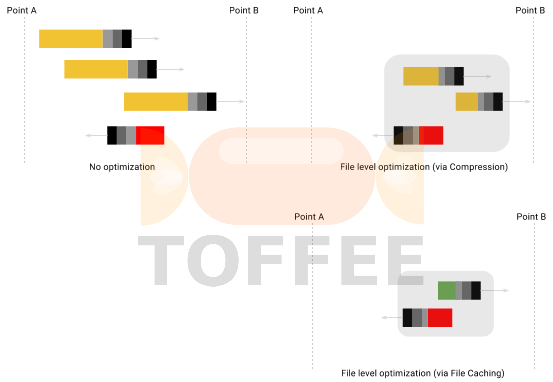DOCUMENTATION 》 WAN Optimization - Animated demo of Packet Optimization in TOFFEE-DataCenter
Suggested Topics:
TOFFEE-DataCenter - WAN Optimization
Categories
| 💎 TOFFEE-MOCHA new bootable ISO: | Download |
| 💎 TOFFEE Data-Center Big picture and Overview: | Download PDF |
iPerf Network Optimization - WAN Optimization Demo ↗
Saturday' 13-Mar-2021
Demo TOFFEE-DataCenter WAN Optimization VM Test Setup ↗
Saturday' 13-Mar-2021
Featured Educational Video:
Bulk Ping Tests - WAN Acceleration ↗
Saturday' 13-Mar-2021
My Lab HDD and SSD logs for research ↗
Saturday' 13-Mar-2021
Demo TOFFEE-DataCenter WAN Optimization VM Test Setup ↗
Saturday' 13-Mar-2021
Research :: Optimization of network data (WAN Optimization) at various levels:

Learn Linux Systems Software and Kernel Programming:

Hardware Compression and Decompression Accelerator Cards:
![TOFFEE Architecture with Compression and Decompression Accelerator Card [CDN] TOFFEE Architecture with Compression and Decompression Accelerator Card [CDN]](http://sareesaremypassion.org/cdn/the-toffee-project/i/DOCUMENTATION/33/TOFFEE%20compression%20hardware.png)
TOFFEE-DataCenter on a Dell Server - Intel Xeon E5645 CPU:







